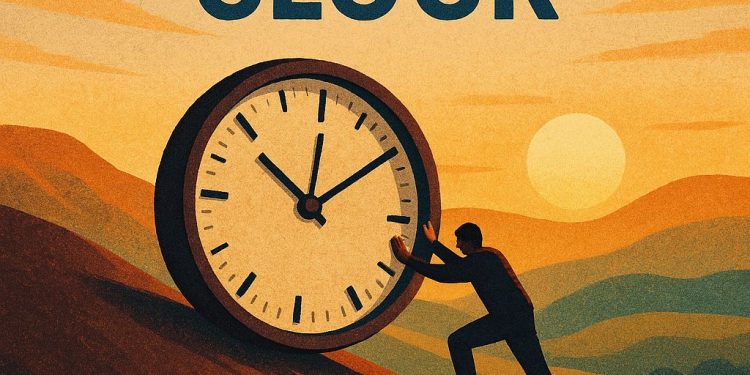Lovart’s AI Design Agent uses a smart engine called MCoT to quickly make up to 40 brand-matching designs from one prompt in just a few minutes. It helps companies save a lot of time and money on campaigns, dropping costs from tens of thousands to just a few hundred dollars. Over 800,000 people around the world use it to create ads, websites, and more, all while working together in real time. Users love its fast results and strong brand consistency, and the founder, Melvin Chen, brought big tech ideas from TikTok to make it happen. By the end of 2025, Lovart plans to let people make full video campaigns just as easily.
What is Lovart’s AI Design Agent and how does it transform enterprise creative workflows?
Lovart’s AI design agent leverages the proprietary MCoT (Mind Chain of Thought) engine to deliver up to 40 high-fidelity, brand-consistent assets per prompt in under three minutes. It dramatically reduces campaign costs, offers real-time collaboration, and is trusted by 800,000 users across 70 countries.
Lovart’s AI design agent is rewriting the playbook for brand campaigns, and the numbers speak louder than any launch party. In July 2025 the platform exited beta with 800,000 active users across 70 countries – a leap that started from a waitlist of 100,000 people in only five days back in spring 2025 source.
How the agent works
At the core sits the proprietary MCoT (Mind Chain of Thought) engine. Unlike template bots, MCoT reasons about business goals, audience segmentation, and cultural nuance before drawing a single pixel. A single prompt can yield up to 40 high-fidelity assets – from brand kits and motion ads to packaging mock-ups and UI flows – in under three minutes while keeping strict visual consistency source.
Price shock for the agency world
Traditional six-figure campaign retainers now compete with a $90 monthly subscription. Early users report that the cost of a full-funnel launch – including social visuals, landing pages and 15-second product videos – dropped from an average of $42,000 (2024 agency benchmark) to less than $300 in platform fees and internal hours source.
Real-time human-AI workspace
What users are saying
- Product Hunt rating: 4.9/5 from 24 reviews in August 2025
- Beta testers’ time saved: 68 % on repetitive layout tasks
- Brand consistency score: 94 % when re-using the agent’s own memory bank source
Who is behind it
Founder Melvin Chen left his role as senior product director at ByteDance to build Lovart, applying TikTok-scale recommendation logic to design assets instead of videos source.
Competitive snapshot
| Feature | Lovart | Canva AI | Midjourney | Adobe Sensei |
|---|---|---|---|---|
| End-to-end campaigns | Yes | Partial | No | Partial |
| Creative reasoning engine | Yes (MCoT) | No | No | Limited |
| Pricing (monthly) | $90 | $15–120 | $10–60 | $20–80 |
| Max assets per prompt | 40 | 4–6 | 4 | 1–3 |
Next moves
Chen’s roadmap filed with the U.S. Patent Office in August 2025 hints at multimodal video campaigns (storyboard → shoot list → editable 30-second spots) rolling out before the holiday 2025 season, aiming to keep the current 12 % weekly user growth rate steady through Q4.
What is Lovart’s AI Design Agent and how does it work?
Lovart’s AI Design Agent is an enterprise-grade creative co-pilot that turns a single prompt into a complete brand campaign. Inside the platform, a proprietary engine called Mind Chain of Thought (MCoT) reasons about your brand, audience and business context before it generates any asset. The result is up to 40 high-fidelity deliverables – from brand kits and social visuals to packaging, UI flows and 30-second product videos – all ready for Figma, Photoshop or After Effects in minutes.
The agent is already powering more than 800,000 users across 70 countries since its July 2025 global launch, replacing the typical six-figure agency fee with a subscription starting at $90 per month.
Why are teams switching from traditional agencies to Lovart?
Traditional workflows often involve multiple tools, rounds of feedback and large budgets. Lovart compresses that process into one canvas where humans and AI iterate together in real time. Beta testers report saving 70–90 % of typical campaign time because:
- Brand memory keeps every asset consistent
- Smart editing tools (auto-shadow, layer extraction, outpaint, 4K upscaling) eliminate grunt work
- ChatCanvas workspace lets marketers, designers and stakeholders co-create live instead of juggling files
Can non-designers produce professional results with Lovart?
Yes. Kingy AI’s August 2025 video review shows users building a poster, then extending it into a branding kit, explainer video and 3D character within minutes – all without opening a design program. The secret is Lovart’s ability to learn user preferences over time, so a marketer with no formal design background can still output agency-level visuals that feel on-brand and strategic.
How is Lovart different from other AI design tools?
Most competitors automate single assets or rely on templates. Lovart’s MCoT engine is the first multimodal creative reasoning system. A side-by-side from FrozenLight.ai (July 2025) places Lovart against Canva, RunwayML and Kittl:
| Platform | Reasoning depth | Assets per prompt | Typical cost | Human-like nuance |
|---|---|---|---|---|
| Lovart | Strategic/Brand | Up to 40 | $90 / mo | High |
| Canva | Layout only | 1-3 | $15 / mo | Template-based |
| RunwayML | Multimedia | 1-2 | $15 / mo | Medium |
| Kittl | Logo/Branding | 1 | $10 / mo | Low |
What does Lovart mean for agencies and freelancers?
Rather than replacing creatives, the platform is augmenting them. Agencies are using Lovart to:
- Pitch faster – fully mocked campaigns in client calls
- Scale small teams – one strategist now manages output that once needed five designers
- Focus on high-value tasks – strategy, storytelling and client relations while AI handles asset variations
Freelancers who integrate Lovart report higher project volume and the ability to compete on retainers that were previously out of reach. The consensus from TechCrunch, Creative Bloq and 800,000 early adopters: AI + human creativity beats either alone.



















